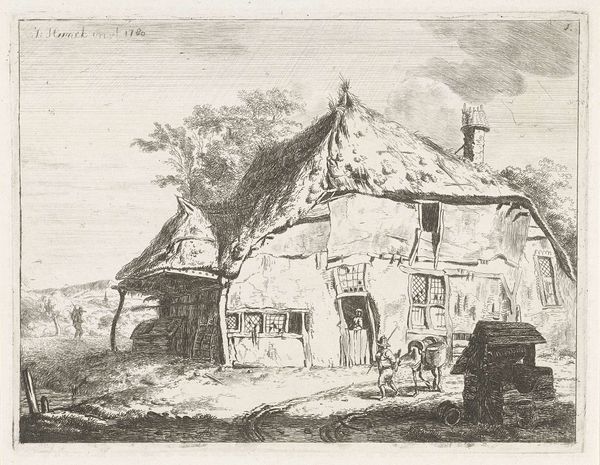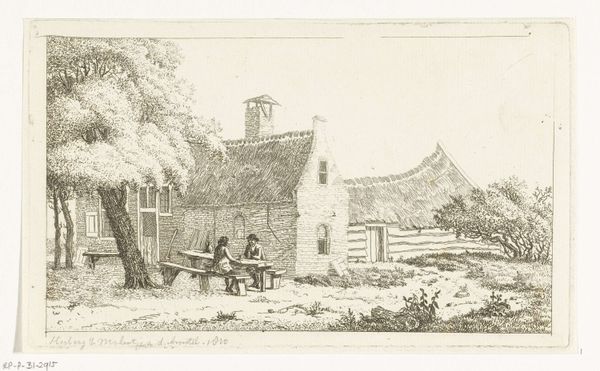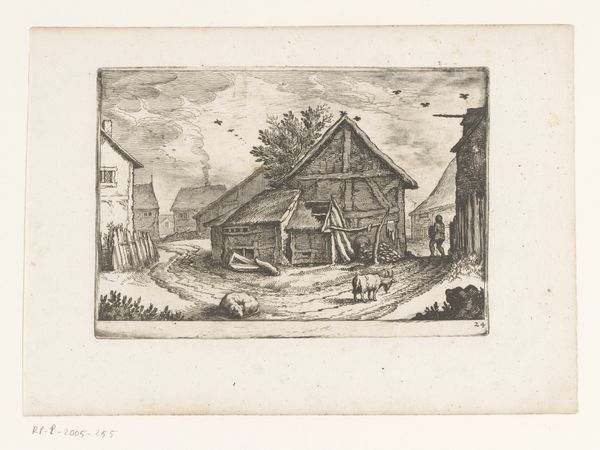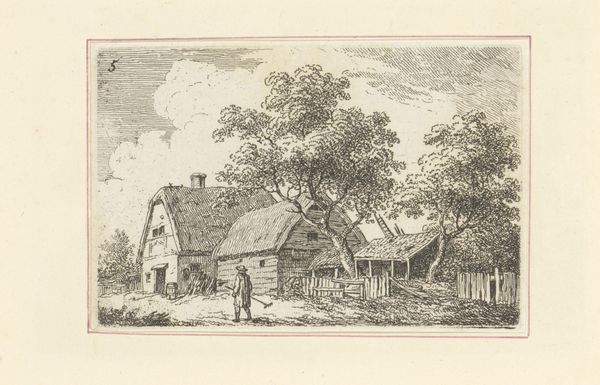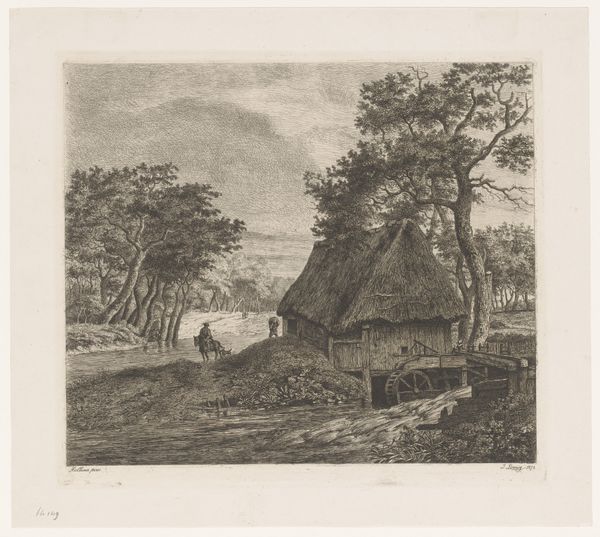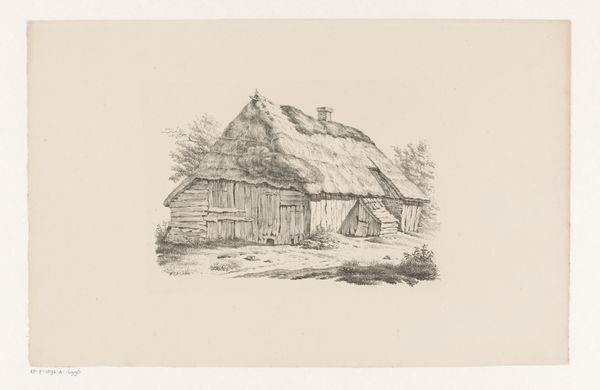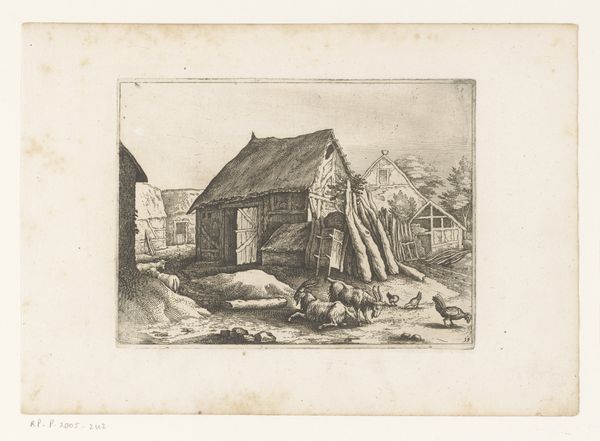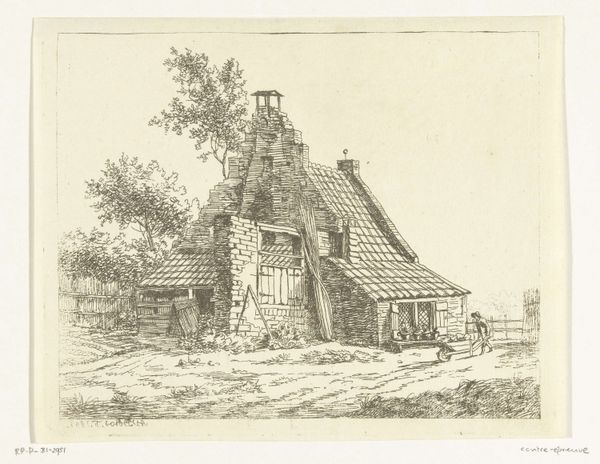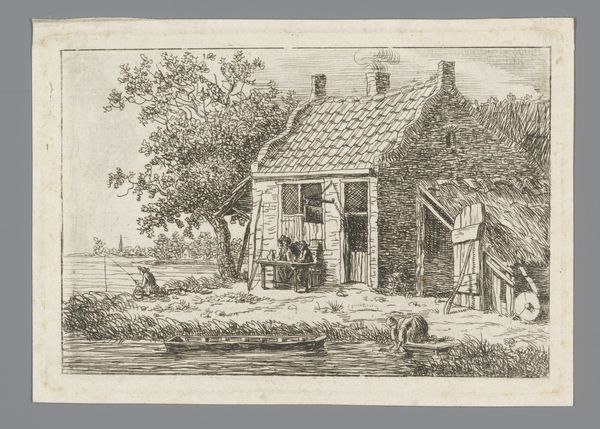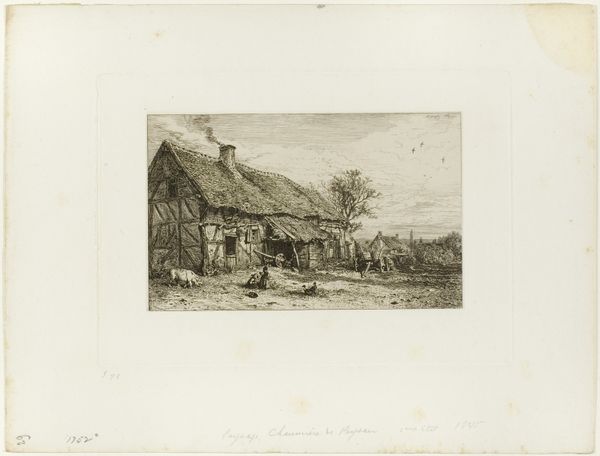
print, etching
#
dutch-golden-age
# print
#
etching
#
landscape
#
etching
#
genre-painting
#
realism
Dimensions: height 126 mm, width 149 mm
Copyright: Rijks Museum: Open Domain
Curator: Let's explore this etching by Anthonie van den Bos, titled "Boerderijen te Rouveen bij Staphorst," dating from between 1773 and 1838. Editor: Immediately, I'm struck by its quiet realism. It feels grounded, unpretentious—like a snapshot of everyday life in a rural community. The textures are particularly captivating given its black and white rendering. Curator: Indeed, the interplay of light and shadow achieved through etching lends a remarkable depth to the scene. Notice the composition—how the thatched roofs of the farmhouses dominate the frame. Van den Bos' skillful manipulation of line weights creates a textural contrast between the rough thatching and the smoother rendered sky. Editor: And how the artist subtly emphasizes labor and community. You have the figure pushing a wheelbarrow, seemingly working the land, and then the almost ghostly figure seemingly relaxing on the house’s porch. The buildings themselves speak to generations of communal living. I can’t help but consider the socio-economic context: Who were the inhabitants? What was their relationship to the land? The visual details give us small entrypoints into that period and the struggles, or triumphs, lived on the homestead. Curator: These kinds of prints allowed for wider distribution of landscapes beyond paintings, increasing visual accessibility. This aesthetic resonates within a rich lineage of Dutch Golden Age art, offering glimpses into what might be seen as humble subjects, genre scenes reflecting agrarian life—yet charged with artistic attention. We could parse semiotic readings of the thatched roof itself, thinking of its rustic construction and natural decay, contrasting it perhaps with an idealized, architectural form of civic power... Editor: It's interesting that you draw that contrast to "power." These intimate glimpses into communal, and rural life, offered counterpoints to aristocratic depictions of landscape, centering on the agency of everyday workers rather than a distant patron or ruling class. Even this seemingly simple etching contributes to how we understand social power and artistic representation during this period. Curator: Van den Bos compels us to appreciate how simple lines can construct worlds that have lasting aesthetic impact. Editor: Right—the way it quietly holds space for those histories is profoundly powerful. It reminds us to look closely and consider all of those interwoven realities that comprise our human experience.
Comments
No comments
Be the first to comment and join the conversation on the ultimate creative platform.
